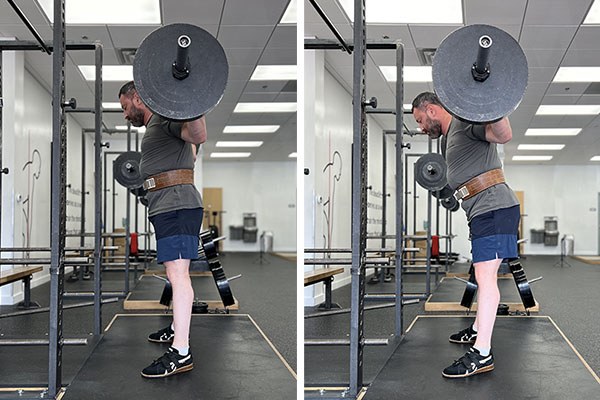
Zero Before You Lift
by stef bradford, PhD, SSC | June 20, 2024
Have you ever noticed a lifter, maybe even an experienced one,
struggling to respond to cues during a lift and still failing to move
into the right positions? If you do, take a moment to pay extra
attention to the start position. An improper set up not only begins
the movement from the wrong position, creating an extra mechanical
problem to solve, but it can
also alter a lifter’s perception of where his body is in space
since the reference position that he moves in relation to is out of
alignment – his “zero” is wrong.
Proper calibration of
the start position is essential for accurate measurement of how and
where you are moving. We do this with instruments such as scales by
“zeroing” before use – setting the device so that it reads
exactly zero when there is no weight being applied – in order to
get accurate results. If the scale is not zeroed, the error will be
added to the value displayed for an object when it is weighed. In a
similar way, setting up a lift with each segment in the proper
alignment and in balance – center of mass of the system over
mid-foot and evenly distributed from side to side – “zeros” the
lifter, making it easier to correctly and consistently judge the
position and the movement of joints and segments under the bar.
Squat and press start
positions are prone to drift because they are not constrained by a
bar that must stay in front of the body, as it does in the pulls.
They also lack a “pre-game”: there is no 5-step teaching method
for the squat or the press to help discipline the lifter and ingrain
a process of getting ready for the lift the way there is for the
deadlift, clean, or snatch.
You might see a lifter setting up for a squat with the correct
stance, grip, bar position, but not standing straight up – slightly
bent over, with the hips held in flexion and straight legs shifted
back to maintain a balanced position over mid-foot. It’s a common
“rest” position, especially for a lifter with an insecure rack
who has adopted the habit of using back angle to help hold the bar in
place between reps. Often the lifter will not be aware that he is not
in the correct start position because the configuration has become
normal to him – it has become the reference position for the start
and finish of the lift.
When the lifter begins
his descent, the hips have a head start and the knees have to catch
up during the early part of the eccentric portion of the squat. They
need to move a longer distance from their too-far-back starting place
to find the correct position to hold at the bottom before the hips
drop below parallel. And often they do not.
Some lifters shift the
balance toward the heels as they lower themselves in the squat,
leaving the knees too far back and taking work away from quads.
Others let the too-far-back knees race forward, overshoot the set
point, and slam forward at the bottom in the classic knee-slide
presentation.
Either problem can be
hard to solve without recalibrating the start to the proper reference
position, as the set-up error affects perception of knee travel
during the lift. Imagine being the case above and being
coached “Knees forward!/More knees!/Earlier knees!” but feeling
as if the main thing you’re already doing is exactly that.
Another example of this
effect is in the press, where instead of starting from an erect
position by pushing the hips forward, the lifter shoves the hips
back. The backward movement is not necessary, it adversely affects
timing, and nearly all lifters who do this will push the hips only
slightly forward and not ever get to an effective place for the
dynamic start.
Coaching lifters who do
this with “More hips!/Hips forward!/Hips to the wall!” tends to
not be effective since the lifter is measuring a lot of hip travel
already. The problem is that the hip use they perceive just cancels
out the too-backward start position, and it doesn’t lead to
productive use of the hips in the press to create anterior tension
that can be translated into upward momentum of the bar.
Take a moment to zero
your position before you start each rep. When you squat or press,
stand all the way up, check that the back is locked into position, suck
in a big breath and brace, and feel the mid-foot balance point before
starting to move the bar. This approach will produce consistent,
repeatable technique when you lift.
Discuss in Forums
Credit : Source Post







